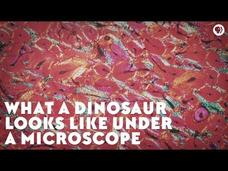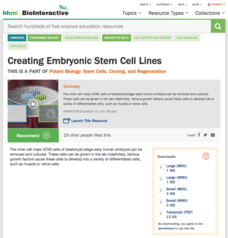Catalyst University
Anatomy & Functions of the Elbows Flexors & Extensors
In this video, we discuss the two movements of the elbow joint (flexion and extension) and the muscles that facilitate each movement. Also, origins, insertions, and actions are covered with an interactive muscle anatomy program.
The Wall Street Journal
Chasing Cures
At the 2020 WSJ Health Forum, Reporter Amy Dockser Marcus spoke with Center for Genetics Executive Director Dr. Marcy Darnovsky and Dr. Todd Kuiken, senior research scholar at NC State, about scientists' right to pursue controversial...
Catalyst University
Disk Diffusion Test using Bacitracin or Optochin
In this video, I explain how to determine resistance (R) or susceptibility (S) in bacteria using the disk diffusion method (with bacitracin and optochin).
Catalyst University
Biochemistry of the Entner-Doudoroff Pathway
Biochemistry of the Entner-Doudoroff Pathway
Catalyst University
Mannitol Salt Agar (MSA) | Results & Theory
Here, I explain the results and theory underlying mannitol salt agar. I also show a flow-chart that guides the student in interpreting the result correctly.
Curated Video
Ethics in Science
Ethics in Science assesses whether the actions of a scientist were ethical by examining scenarios and describing why each scenario was or was not ethical.
Institute of Human Anatomy
How Diet Affects Your Pee
In this video, Justin from the Institute of Human Anatomy discusses how cranberries and foods such as asparagus affect urine. He also discusses what the various colors of urine mean in regards to health and how we produce urine.
Institute of Human Anatomy
How Your Body Really Burns Fat: Can We Control It?
In this video, Jonathan from the Institute of Human Anatomy explores the ins and outs of fat loss. He breaks down what fat loss really means how it works, and tackles a burning question we all have when trying to shed those extra pounds:...
Curated OER
Biology Lab - Mitosis and Meiosis
Paul Anderson gives an explanation of how to conduct a biology lab to see mitosis and meiosis. This clip is directed at teachers and shows how to use an onion root and the fungus sordaria to count up the phases and draw a cell cycle pie...
Crash Course
Lab Techniques and Safety
Lab safety, lab safety, lab safety: you can't say it enough! A video demonstrates the essentials for being safe whether in a chemical or biological lab. Learn the techniques to keep you and your classmates safe all year, from activity...
Amoeba Sisters
Gel Electrophoresis
Ever wonder how scientists determine how animals are related, or who is guilty of a crime? Discover gel electrophoresis in an easy-to-understand video from a fun biology playlist. Topics include how restriction enzymes create segments of...
Amoeba Sisters
Inside the Cell Membrane
Without the cell membrane, our cells just couldn't keep it together! What else does this multifunctional membrane do? Take a deeper look at the fluid mosaic model using a video from an expansive biology playlist. Topics include embedded...
Fuse School
Green Chemistry - Principle 8
Energy conservation is a global effort, but how can chemists aid the cause? The narrator in the eighth installment of a 12-part Green Chemistry series describes the importance of reducing reactant waste while performing reactions with...
MinuteEarth
What is Skin For?
Smooth or scaly, skin is sensational! Besides keeping us from being gooey, what does it do? Pupils embark on an integumentary investigation with a short video about skin. Topics include the special features of skin cells, how skin...
Periodic Videos
Zinc
While some find zinc uninteresting, others use it to shoot fire across the lab. A chemistry video details the metal, along with demonstrations that provide new insight to an common element.
PBS
The RNA Enigma
Folding a fitted sheet seems impossible, but folding RNA seems like a game. Viewers learn how they can help scientists prevent or cure diseases. It emphasizes the need for human help because computers struggle with these puzzles.
PBS
What a Dinosaur Looks like under a Microscope
How do scientists determine the age of a dinosaur when it died? Viewers earn how scientists make slides of dinosaur fossils and how they use these images to determine age at death. Part of a larger Eons series from PBS, these beautiful...
TED-Ed
How Pandemics Spread
An eerie hand-drawn-style animation narrates how diseases are dispersed on a global scale. Although the content can strike fear in the hearts of viewers, it ends by noting how science has provided a way to minimize impact by identifying...
Socratica
What Is Biochemistry?
Watch as chemistry comes alive! Socratica's biology playlist kicks off with a simple video detailing the principle components of biochemistry. Content includes carbohydrates, proteins, and nucleic acids. The narrator describes each class...
Socratica
Ionic and Covalent Bonds and Hydrogen Bonds
What determines the type of bond two atoms will form? Science scholars examine the factors that affect the formation of molecules and compounds through a short video from Socratica's biology series. Topics include valence electrons,...
Socratica
Properties of Water: Hydrogen Bonding in Water
Water is life! How is one small molecule responsible for so many big things? Socratica's series on biology presents a fascinating look at the universal solvent. From its adhesive properties caused by hydrogen bonding to its ability to...
Howard Hughes Medical Institute
Creating Embryonic Stem Cell Lines
Even today's stem cells have a history—and it's more than 30 years old! Learn how stem cell lines grow in a lab. Observe the various experiments completed to determine how cells grow in human embryos.
Other popular searches
- Biology Lab Photosynthesis
- Enzyme Biology Lab
- Biology Lab Microscopes
- Biology Lab Safety
- Biology Lab Skills
- Biology Lab Protocol
- Biology Lab Safety Lesson
- Biology Lab Energy
- Introduction to Biology Labs
- Biology Lab Skills Lesson
- Biology Lab Sskills
- Enzyme Biology Lab Pectinase
















